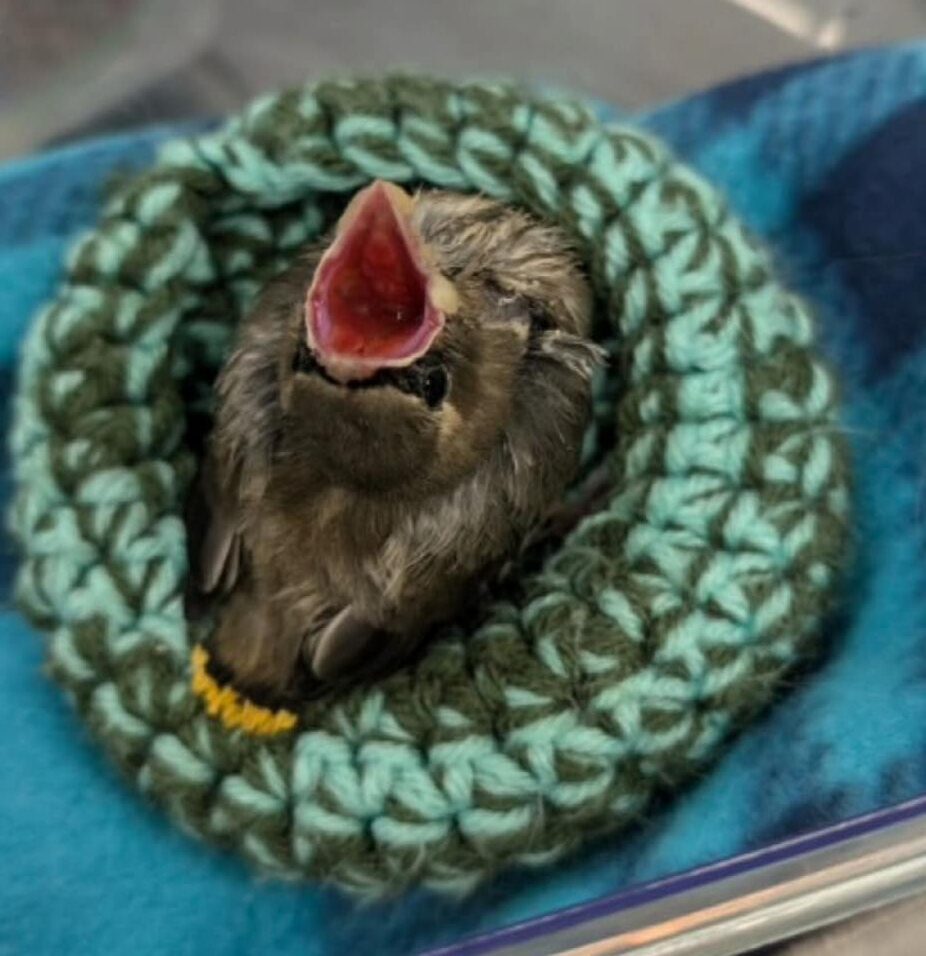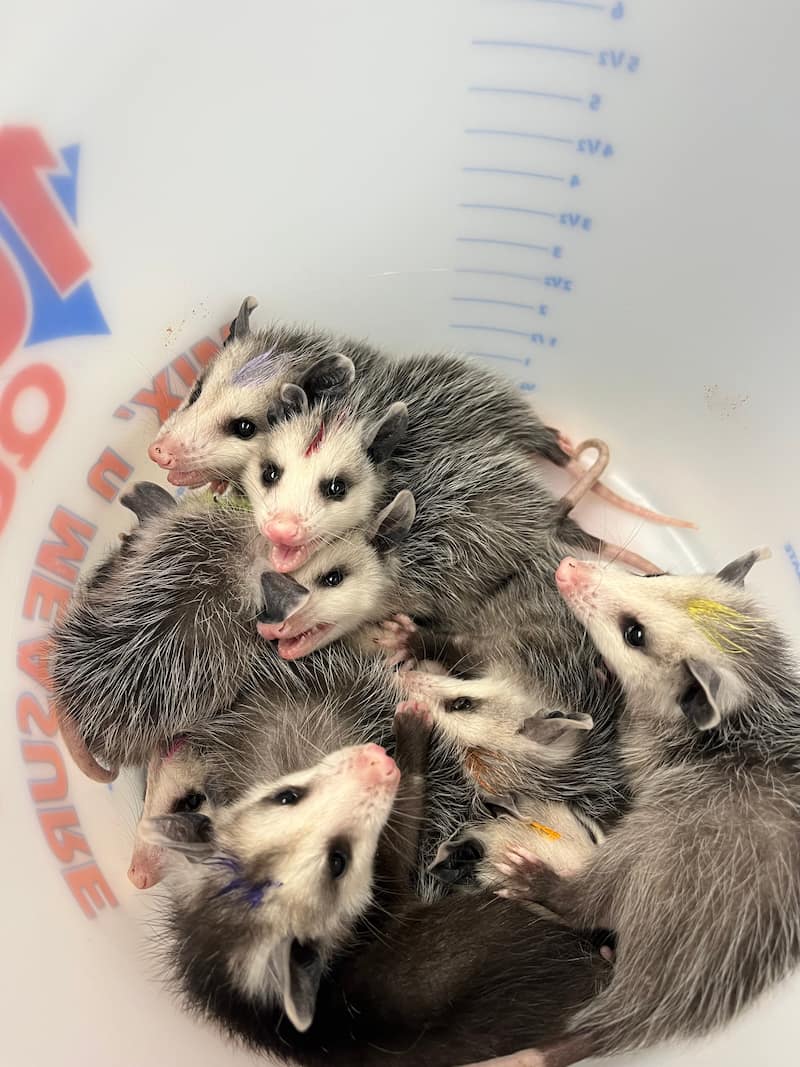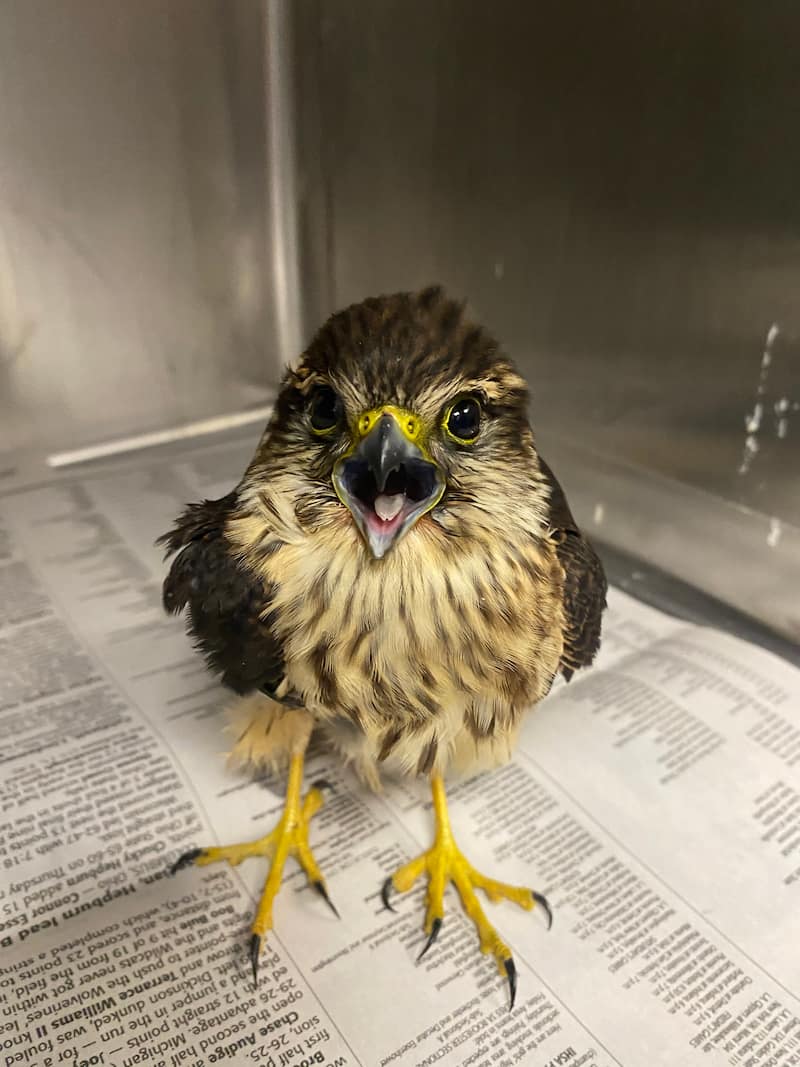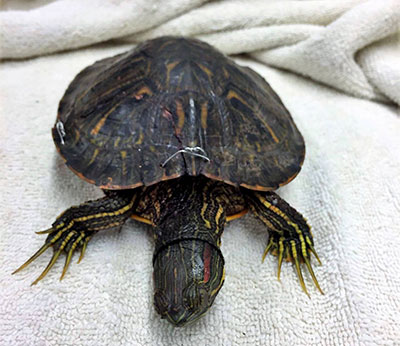
A red-eared slider turtle was presented to the Wildlife Medical Clinic after being hit by a car. Upon a visual exam, there was an obvious shell fracture on the right side and trauma to the right eye. A full physical exam did not reveal any more issues that needed to be addressed. Fractures are serious but the eye injury was of grave concern.
The first step in the turtle’s recovery was taking care of its injuries. The wounds were cleaned and bandaged, and the turtle’s condition was stabilized. The turtle was placed on buprenorphine for pain management and ceftazidime (an antibiotic) to control infection of the wounds.
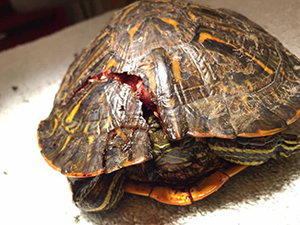
For two days, before the turtle underwent surgery to repair its fracture and address its injured eye, I was entrusted with assessing the patient’s health and administering the appropriate treatments. I gave subcutaneous fluids and administered the medications. Some of the treatments required that I place medication and food directly into the turtle’s mouth, but we needed to come up with a clever way to keep the mouth open. The solution was to by use a 1 ml syringe without its plunger. The turtle bit the syringe, then we placed a feeding tube through the syringe into the mouth, and gave the necessary treatments while preventing the turtle from biting through our tube.
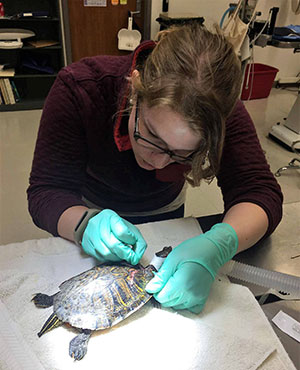 Surgery was performed to repair the shell fracture with a combination of wires and epoxy. Unfortunately, the turtle’s eye could not be saved and was removed. After surgery, we needed to apply eye ointment to the socket to prevent infection while it healed. Creativity was needed again. Feeling much better, the turtle attempted to bite us every time we tried to apply the ointment. Additionally, the turtle would draw its head back into its shell to avoid treatment. We held the turtle facing towards the ground, while pushing on its back legs and tail, so that it would bring its head out of its shell. As quickly as possible, I placed the ointment on the site, only to have the turtle pull its head back in and rub off the ointment in the process. Fortunately, enough ointment stayed on and we successfully treated the wound.
Surgery was performed to repair the shell fracture with a combination of wires and epoxy. Unfortunately, the turtle’s eye could not be saved and was removed. After surgery, we needed to apply eye ointment to the socket to prevent infection while it healed. Creativity was needed again. Feeling much better, the turtle attempted to bite us every time we tried to apply the ointment. Additionally, the turtle would draw its head back into its shell to avoid treatment. We held the turtle facing towards the ground, while pushing on its back legs and tail, so that it would bring its head out of its shell. As quickly as possible, I placed the ointment on the site, only to have the turtle pull its head back in and rub off the ointment in the process. Fortunately, enough ointment stayed on and we successfully treated the wound.
Eventually, the turtle was successfully released before winter and hibernation!
This turtle has been a rewarding case for me. I felt very helpful because I grew up taking care of red-eared slider turtles and I was able to give my input and share my knowledge of feeding, habitat, handling, and normal behaviors of red-eared sliders with my teammates. We were able to make educated decisions about our patient and the care we are giving.
—Candace Barath, Vet Med Class of 2020

